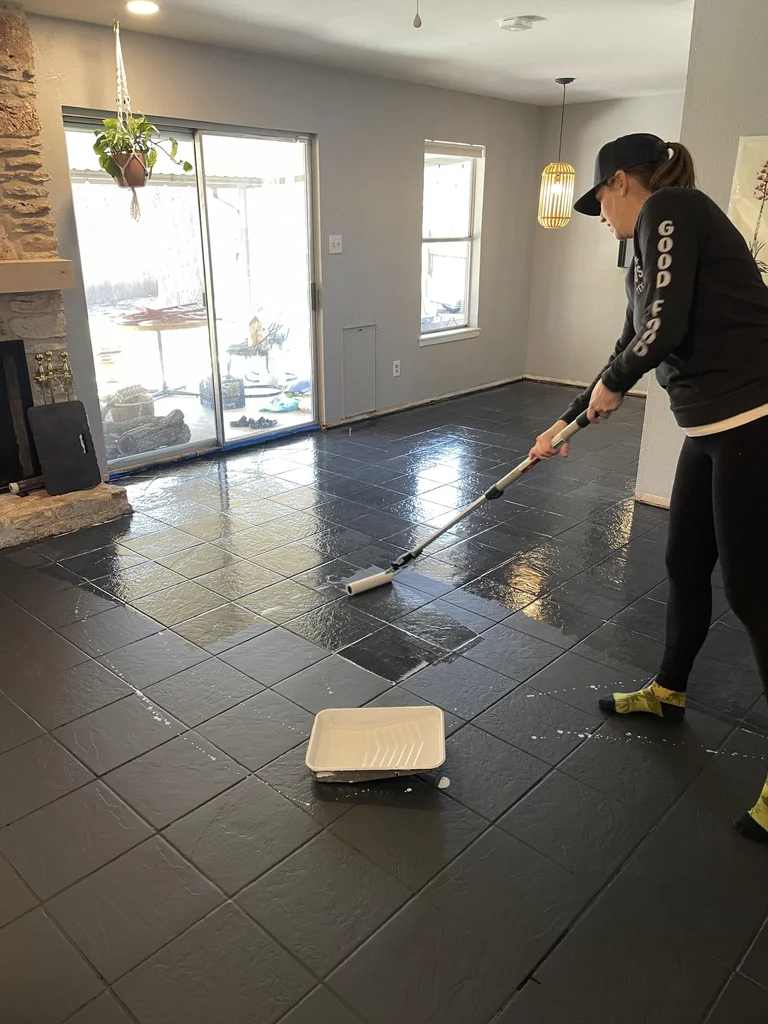Rather than investing both the time and money necessary for tile replacement, painting your tile floors could be an affordable and easy way to refresh their appearance without spending both the effort and money required for replacement. But before proceeding with painting your tiles you must conduct a comprehensive surface prep procedure in order to achieve results.
Paint adheres best to smooth, clean and primed surfaces; therefore, Griffin suggests sanding your existing tile with 220 grit before beginning work on painting it.
Priming
When painting tile surfaces, it’s essential to use a high-adhesion primer tailored specifically to their surface. This will provide your paint with more hold while keeping its placement secure. Furthermore, make sure all dirt, grime, mold stains or food residue is removed as this could prevent its adhesion with the primer.
Griffin recommends KILZ Premium Plus Primer/Sealer/Stainblocker as an adhesive primer option, given its water resistance, low VOC emissions level and wide variety of surfaces compatible use – perfect for stenciling projects as well as hand painted decorations.
Before applying a primer, it’s essential that the area be properly prepared by taping and covering furniture, sanding any tiles necessary for improved adhesion, and making sure the floor is completely dry before walking on it or moving furniture back in. Furthermore, allow enough time for your primer to fully dry – this will help ensure it goes off without any major hitches.
Stenciling
For stenciling over existing tile, linoleum or cement floors you will require a dense foam roller loaded evenly with paint. Too much paint could seep through and cause seepage under your stencil, leading to bleeding. Roll gently over each section – repeat as necessary until all areas have been fully covered – usually two coats should do it!
Smaller areas are best covered with a stencil brush. Once complete, touch up any spots where paint has seeped past your stencil and touch up any spots where bleed-through has occurred before sealing your design with water-based sealant for added protection.
Use painters tape to secure your stencil and move around without making a mess in any room. If stenciling on the edge of a wall, tape down its perimeter so as to avoid overspreading paint onto adjoining walls. Finally, make use of registration marks on your stencil to line up each new tile perfectly!
Painting
Painting over tile floors is an effective way to give them new life for far less than replacing them. But painting won’t provide long-term solutions; paint may chip and fade in moist environments, especially where moisture may condense on it. Therefore, only attempt this option in drier rooms and use oil- or water-based floor paint designed specifically for use on floor surfaces.
Benjamin Moore and Rust-Oleum offer floor paints designed specifically to meet the demands of tile, such as Benjamin Moore’s and Rust-Oleum’s. These high-performance options come in an assortment of colors to complement existing tiles or provide exciting new looks.
After your floor has been painted, decorate it further by using stencils or hand-painted decorations. Allow it to dry for several days before walking across it or returning furniture; don’t forget to seal it afterwards using clear water-based urethane!
Sealing
stenciled patterns add an exciting new flair to any tile floor, from quilt-like patterns like in the Remington Avenue powder room or more geometric ones in Brown Acres kitchens. Make sure that you select an appropriate stencil size so you can fully appreciate its design!
Once your painting project is complete, allow the paint to dry thoroughly before walking on it or moving back furniture. A sealant may also provide extra protection from stains or other forms of damage to its new coat of paint.
Be sure to carefully follow the product’s instructions when applying sealant, especially since some sealers emit strong fumes. Let the sealant dry according to its manufacturer’s recommendations before walking on or using your newly painted tile floors again – with proper care, they should last six months or more.


